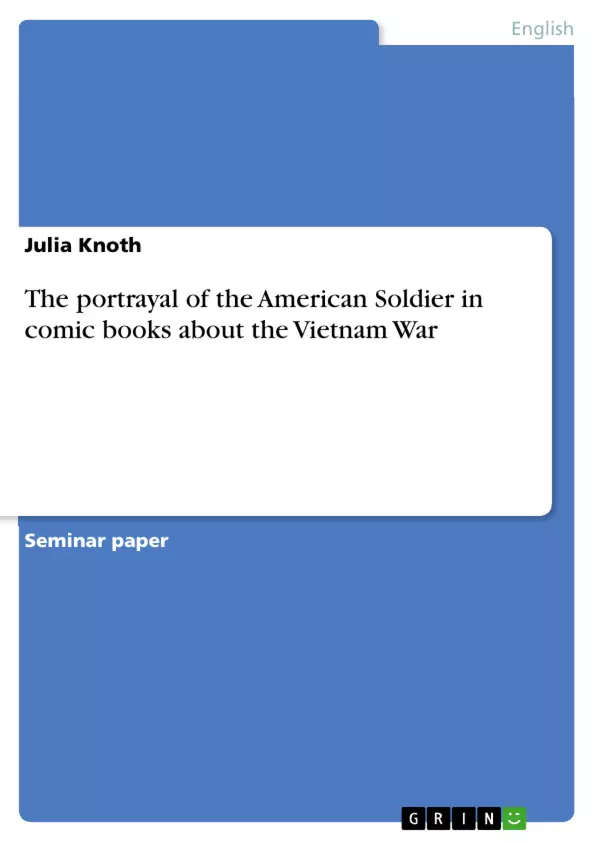In the comic series „Our Fighting Forces“, the American Soldier Captain Hunter is featured in „Cold Steel for a Hot War!“. The issue was published in August 1966, during the Vietnam War. Of course, you can read the comic from the perspective of young readers who desire to be entertained, but it is immensely interesting to look at the picture of American Soldiers which is conveyed by the comic, especially taking its effect on the readers into consideration.
Thus, this paper focuses on the question: How is the American Soldier in the Vietnam War portrayed in the comic? In the course of this paper I will attempt to point out why the American Society as readers should be influenced by the heroic portrayal of Captain Hunter and the positive representation of American involvement in the Vietnam War.
In order to find out how the American Soldiers are portrayed in the comic, the comic will be analyzed. The analysis focuses on the principal character Captain Hunter, but I will also take a look at the portrayal of the Vietnam War and the Vietnamese, intending to have a general idea of the entire comic and the world of Captain Hunter.
A comparison to another comic follows after the analysis. The `Nam is a different type of war comic, the portrayal of the Vietnam War is very close to the reality. The editor Larry Hama points out in the introduction, that the comic even received an award for being the „best media portrayal of the Vietnam War“.
Every medium tries to deliver a message, which is also valid for comic books. For this reason, I will have a closer look at the possible influences of the comic in the next step. Here, it is essential to look at the addressees of the comic and explain the effect on the target group.
Table of Contents
- Introduction
- Analysis of the comic
- The comic in general
- The Vietnam War
- The Vietnamese
- Captain Hunter
- Comparison to “The 'Nam”
- Influences of the comic
- Conclusion
- Bibliography
Objectives and Key Themes
This paper aims to analyze the portrayal of the American Soldier in the Vietnam War as depicted in the comic book "Cold Steel for a Hot War!" from the series "Our Fighting Forces." The analysis will explore the comic's representation of Captain Hunter, the Vietnam War, and the Vietnamese people. The paper will then examine the potential influence of this portrayal on the American audience.
- The portrayal of the American Soldier in the Vietnam War
- The impact of comic book media on the American public
- The influence of Captain Hunter's heroic image on the American perception of the war
- The use of visual storytelling to convey historical narratives
- The role of media in shaping public opinion about conflict and war
Chapter Summaries
The paper begins with an introduction that highlights the significance of comic books as a medium for conveying historical narratives, particularly during the Vietnam War. The analysis then delves into the comic's visual elements, discussing the use of color, character design, and panel transitions to create a realistic and engaging narrative. The portrayal of the Vietnam War itself is explored, focusing on the portrayal of the conflict's brutality and the role of Captain Hunter as a heroic figure.
Keywords
The key words for this paper include American Soldier, Vietnam War, comic books, media portrayal, Captain Hunter, heroic representation, public perception, historical narrative, visual storytelling, and influence of media.
- Quote paper
- Julia Knoth (Author), 2013, The portrayal of the American Soldier in comic books about the Vietnam War, Munich, GRIN Verlag, https://www.grin.com/document/423960



